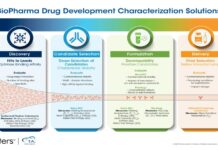Bayer AG and Mammoth Biosciences, Inc., which is harnessing the diversity of nature to power the next-generation CRISPR products, announced a strategic collaboration and option agreement for the use of Mammoth’s CRISPR systems to develop in vivo gene-editing therapies.
Mammoth Biosciences’ groundbreaking gene-editing technology is a key enabling technology, as well as a stand-alone therapeutic modality. It will significantly enhance Bayer’s efforts to develop transformative therapies for patients faster and strengthen the company’s recently established new cell and gene therapy platform. Under the terms of the agreement the two companies will start their collaboration with a focus on liver-targeted diseases.
“Bringing together Mammoth’s novel CRISPR systems with our existing gene augmentation and our induced pluripotent stem cell (iPSC) platforms will allow us to unleash the full potential of our cell and gene therapy strategy,” said Stefan Oelrich, Member of the Board of Management, Bayer AG and President of the Bayer’s Pharmaceuticals Division. “Partnering with Mammoth’s cutting edge scientific team is a fundamental pillar for our company to improve the lives of patients suffering from conditions that are currently still difficult to treat.”
“We’re excited to be working together with Bayer, building on the technology leap of our novel CRISPR systems, along with Bayer’s expertise in successful drug development,” said Dr. Peter Nell, Chief Business Officer and Head of Therapeutic Strategy at Mammoth. “This joint effort has the potential to benefit patients by developing CRISPR-based approaches for the clinic with the appropriate urgency, while ensuring scientific excellence and safety.”
Cell and gene therapies are the next step in the evolution of drug development. By addressing the root cause of diseases, they are potentially capable of permanently reversing diseases with a one-time treatment. Gene editing serves as a key enabler for cell therapies when used outside the living body (ex vivo) and allows therapeutic targeting of a wide range of genetic diseases with a high unmet medical need when used inside the living body (in vivo).
Mammoth Biosciences’ proprietary toolkit of ultra-small Cas enzymes, including Cas14 and Cas?, allows for expanded high-fidelity gene editing to be combined with targeted systemic delivery. Under the agreement, Bayer gains access to this novel gene-editing technology, which offers the potential of an advanced in vivo applicability due to the ultra-compact size of these novel CRISPR systems.
Under the terms of the agreement, Mammoth Biosciences will receive an upfront payment of USD 40 million and is eligible to receive target option exercise fees as well as potential future payments in the magnitude of more than one billion USD upon successful achievement of certain research, development, and commercial milestones across five preselected in vivo indications with a first focus on liver-targeted diseases. In addition, Bayer will pay research funding and tiered royalties up to low double-digit percentage of net sales. The companies are also exploring work on ex vivo projects on a nonexclusive basis.

















![Sirio Launches Global Research Institute for Longevity Studies [SIA]](https://www.worldpharmatoday.com/wp-content/uploads/2019/09/Sirio-218x150.jpg)


